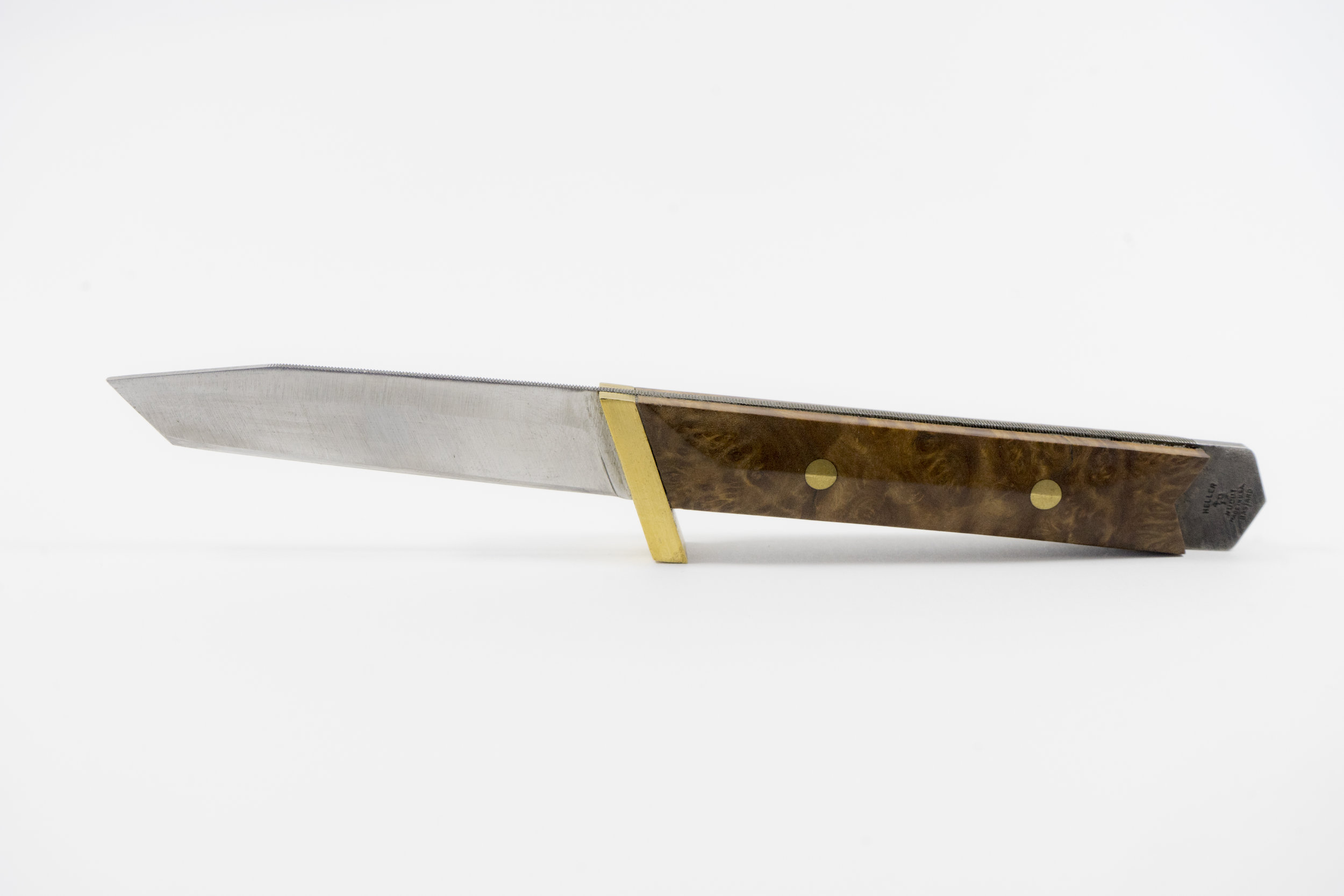Process videos
Making high quality items is a process. If you’re interested in seeing what goes into making these objects, you’re invited to view the below videos of the process. The videos are not meant to be “explainer” videos or a “how to” series, however if you turn on subtitles there is some commentary included about the “how”
Hamilton Varimatic Drill restoration
This is an interesting little project: the restoration and refurbishment of a very precise drill that started it’s life at Boeing making some kind of airplane parts. it runs up to 9000 RPM, which is the speed necessary to turn very small drill bits. In the video, it drills a hole .01350” in diameter, just big enough to fit a human hair through.
Knife from a Bastard File
Found a file for $1.00 at a junk store, and turned it into a beautiful tool! This knife has been tempered down to make it less brittle, and the file remains on the back of the blade in case something needs to be filed down. This knife turned out very sharp, but also tough, the front edge has been left unsharpened to use as a prying tool or broad surface for chisel like use. Turn on subtitles to see some commentary on what's happening, or leave them off and enjoy the zen of making.
Tripod Stools in Cherry and Steel
In which a pile of steel and cherry board is made into custom furniture as part of a commission. Shows a little bit of welding and fabrication, and thankfully little grinding, compared to the amount required by this project. The challenge of this project was getting all the angles right: because there’s few right angles, it’s tricky to hold onto all the pieces for gluing or assembly. The legs are tapered and bent slightly to add lightness to the overall design.
Making of a Hexagon Titanium Damascus ring
This video shows how the hexagon ring is made. it’s a combination of lathe work, manual milling, and careful hand finishing. The process of adding color is unique: Titanium can be heat anodized, which is basically changing the surface coating into a very hard but thin colored layer. In the case of this particular ring, it is a pattern welded rod of titanium damascus, and each different hardness layer anodizes at a slightly different temperature, which creates the pattern, even though the surface shows few hints about the various compositions of the metal within.
Making of the Machinist’s Rocket Lamp
Fair warning: this is an hour long video! But it seeks to document the process of building a unique lamp from scratch. It does not show the CAD design, but shows all the steps in machining a piece from raw materials. Primarily, this work was done on a manual Bridgeport knee mill, but there was also some lathe work and welding. The layout work for this lamp was a bit overkill, but precision in the details brings visual concentricity to the entire assembled unit. This lamp was made in pieces over a several week period a few years ago. This piece resides in a private collection.
Making the titanium engagement ring
This ring was designed to rework the original platinum engagement ring. Platinum is a fairly soft precious metal, and because of its malleability deforms from regular wear with such a narrow band. The original ring was cast using the “lost wax method” but in this video, a new ring is made from a solid bar in one piece. Primarily the design was roughed out on a manual mill with a rotary table. Not shown in the video was a fair amount of hand clean up finishing and polishing with emory paste.
making the titanium Damascus men’s wedding ring
This video follows the creation of a titanium men’s wedding ring. This ring was made with a manual lathe and hand finishing but did not require any CNC work or CAD/CAM design. The finished ring shows the multicolor titanium anodization in the middle band, and inside the ring, with a brushed finish on the outer faces to protect it from wear and scratches.
Making the driver handle from brass and wood
Screwdrivers are a ubiquitous tool in any garage or toolbox. But they are generally very poor quality, and cheap screwdrivers with blunted tips strip screws and generally function poorly. Investing in high quality, fixed blade screwdrivers is expensive, and the whole tool must be replaced when the tip blunts. In the past 20 years, the replaceable bits have become commonplace, but the handles which drive them are generally also under-engineered, and don’t firmly grip the bit in the tool, leading to slippage and scratched work. This driver handle was designed to fix these issues. It grips the bit very securely by means of a set thumbscrew, and has storage in the handle for bits or to “choke up” on long tools. This tool was made mostly on the lathe, with some MDI work on the CNC mill as well.







